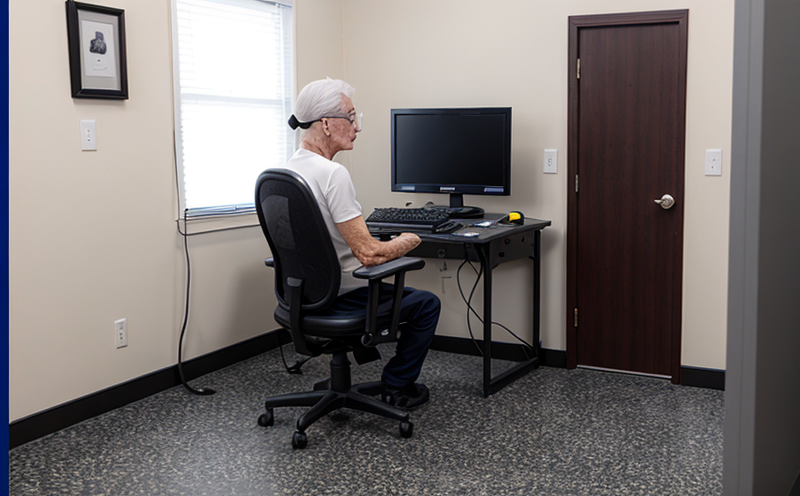GB T 4802-1 Pilling resistance Martindale method
The GB/T 4802-1 pilling resistance test is a crucial procedure used to evaluate the durability of textile fabrics against pilling. This test simulates real-world wear and tear, which helps manufacturers understand how their textiles will perform in everyday use. The Martindale method, as specified by this standard, provides an internationally recognized approach for quantifying the resistance of fabrics to pilling.
The test is widely used across various sectors including apparel, home furnishings, automotive interiors, and industrial textiles where fabric durability is paramount. Pilling can significantly impact a product's aesthetics and functionality over time; hence, it’s essential to assess this property during development stages. By using the Martindale method according to GB/T 4802-1, manufacturers ensure compliance with relevant industry standards while also optimizing their products for longevity.
The procedure involves subjecting fabric samples to repetitive rubbing motions between two surfaces under controlled conditions. The number of cycles needed before observable pills appear indicates the pilling resistance score of each sample. This allows quality assurance teams to make informed decisions about material selection and processing methods early in development cycles, ultimately leading to higher quality products.
For accurate results, proper specimen preparation is critical. Samples should be cut from the fabric according to specified dimensions outlined in the standard. Pre-treatment steps such as washing or drying may also affect test outcomes; therefore, consistency in these processes across all samples tested ensures reliable comparisons between different materials or batches.
The Martindale machine used for this test plays a vital role in achieving consistent results. It replicates the frictional forces experienced by fabrics during normal wear and provides precise control over variables like rubbing speed, pressure applied, and cycle count. Calibration of the equipment is necessary to maintain accuracy throughout testing sessions.
Interpreting the results from GB/T 4802-1 requires careful analysis of both visual observations and quantitative measures provided by the Martindale machine. Visual inspection helps identify when pills begin forming on the fabric surface, while numerical scores give a more objective assessment based on the severity and size of pilling observed after specified cycle counts.
Compliance with GB/T 4802-1 ensures that textile products meet quality expectations set by customers and regulatory bodies alike. It helps maintain consumer confidence in brand reputation by delivering durable, long-lasting garments or furnishings. Additionally, adherence to this standard demonstrates commitment to sustainability practices by minimizing waste caused by premature failure due to pilling.
In summary, the GB/T 4802-1 pilling resistance Martindale method offers a robust framework for evaluating fabric durability against one of its most common issues – pilling. Through rigorous testing procedures and interpretation techniques, this standard supports informed decision-making processes within textile manufacturing industries.
Applied Standards
| Standard Code | Description |
|---|---|
| GB/T 4802-1 | Pilling resistance test - Part 1: Martindale method |
| Standard Code | Description |
|---|---|
| ISO 13938-2 | Pilling resistance test - Part 2: Visual and instrumental assessment |
Eurolab Advantages
EuroLab offers comprehensive textile testing services, including the GB/T 4802-1 pilling resistance Martindale method. Our state-of-the-art facilities and experienced technical staff ensure accurate and reliable results that meet international standards.
- Accurate measurement of fabric pilling resistance
- Compliance with global textile testing requirements
- Expertise in specimen preparation and pre-treatment procedures
- Use of calibrated Martindale machines for consistent test conditions
We provide detailed reports that include both visual observations and quantitative data, allowing customers to make well-informed decisions about their products. EuroLab's commitment to quality control guarantees consistency in testing results across all services offered.
International Acceptance and Recognition
- Published by the Standardization Administration of China (SAC)
- Affirmed by ISO/TC38/WG4 (ISO Technical Committee 38/Working Group 4)
The GB/T 4802-1 pilling resistance Martindale method has gained widespread acceptance and recognition within the global textile industry. Its inclusion in international standards like ISO 13938-2 underscores its relevance for assessing fabric durability.
Many leading brands rely on this test to ensure their products meet stringent quality criteria before reaching marketplaces worldwide. Compliance with such internationally recognized methods enhances brand reputation and fosters trust among consumers who value product longevity and reliability.





